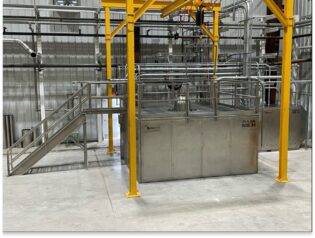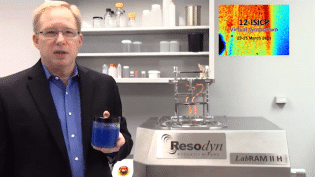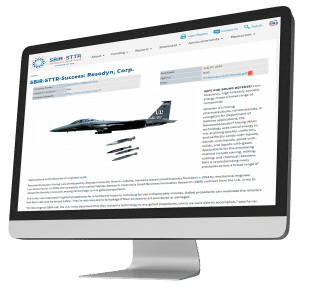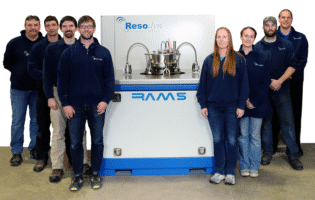
If You Need a Low Shear Mixer for Sensitive Materials, Here’s Why You Should Choose Resonant Acoustic Mixing (RAM)
Resonant Acoustic Mixing (RAM) is considered low shear mixing because it mixes materials through resonant vibration energy rather than using blades, paddles, or other high-shear mechanical impellers. RAM mixers are bladeless non-contact mixers. It does not damage sensitive and expensive materials like most traditional mixers will.
Here’s why RAM is considered the #1 low shear mixer by many of the world’s finest process engineers:
1. No Direct Contact or Blades – Bladeless Non-Contact Mixing

- RAM uses low-frequency, high-intensity acoustic energy to move materials inside a sealed container.
- There’s no rotating shaft, blades or impeller touching the material, so there’s no localized force causing shear.
2. Whole-Container Mixing (see illustration)
- The entire container vibrates in resonance, causing the contents to move and mix through internal particle-particle motion.
- This motion is bulk and uniform, not localized, so it doesn’t produce the intense shear zones found in traditional mixers.
3. Gentle on Sensitive Material
- RAM is ideal for shear-sensitive materials like biological compounds, polymers, or fragile composites.
- It mixes thoroughly without degrading structures (e.g., cells, capsules, gels, or fibers) that would otherwise be damaged by high-shear forces.
4. Shear-Free Energy Transfer
- The energy input is mechanical and volumetric—transmitted through resonance, not friction.
- This results in efficient mixing without generating high heat or mechanical stress, typical byproducts of shear.
5. No Shear Damage
- Traditional mixing methods (e.g., blade mixers) can degrade sensitive particles or binders (e.g., PVDF).
- RAM is gentler and non-destructive, preserving particle integrity and preventing unwanted agglomeration or morphology changes.










